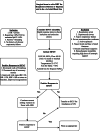Implementation of High-Flow Oxygen Therapy in a Surgical High-Dependency Unit: A Cohort Study
- PMID: 40575242
- PMCID: PMC12198922
- DOI: 10.7759/cureus.84857
Implementation of High-Flow Oxygen Therapy in a Surgical High-Dependency Unit: A Cohort Study
Abstract
Background: High-flow oxygen therapy (HFOT) is a non-invasive respiratory support method traditionally used in the intensive care unit (ICU) settings for patients with acute hypoxemic respiratory failure. It delivers a consistent flow of humidified oxygen at high flow rates, improving oxygenation and reducing the work of breathing. The advantages of HFOT, such as its ability to provide a high fraction of inspired oxygen (FiO2) and its ease of use, have prompted its use beyond the ICU walls in various medical settings. This study examines the feasibility and safety of implementing HFOT in a surgical high-dependency unit (SHDU) at Singapore General Hospital (SGH), where it was introduced as part of a protocol to optimize patient care and ICU resource utilization.
Objective: The primary aim of this study was to evaluate the implementation of HFOT outside the ICU in SHDUs, assessing patient outcomes and the effectiveness of a structured training protocol for healthcare providers.
Methods: This cohort study was conducted in the SHDUs of SGH, a tertiary healthcare institution. The study population consisted of 89 patients who received HFOT across 96 administrations. A standardized HFOT protocol was developed to guide patient selection, initiation, monitoring, and management, with close supervision by the Rapid Response Team (RRT). A comprehensive staff training program was implemented, which included face-to-face training, online in-service education, and ongoing support for nurses. HFOT was delivered using the AIRVO™ 2 machine, which can provide up to 60 liters per minute of flow and an FiO2 of up to 0.95.
Results: A total of 96 HFOT administrations were analyzed, with the mean patient age being 70.8 years and 65% of patients being male. The average duration of HFOT was 40.2 hours. Of the 81 patients analyzed, 64 (66.7%) were successfully weaned to conventional oxygen therapy, while 24 (25%) required ICU-level ventilatory support. The implementation process involved a pilot phase in two SHDUs, followed by full-scale deployment across all units. However, the COVID-19 pandemic disrupted the process, leading to a temporary suspension of HFOT use in non-isolation wards for several months. Despite this setback, when restrictions were lifted, HFOT use outside the ICU expanded significantly, with a notable increase in the number of HFOT initiations in non-pilot wards. The implementation of HFOT outside the ICU faced challenges such as limited hands-on experience and logistical issues, which were addressed through structured training, additional equipment, and a mobile application for setup. Despite these efforts, delays and the lack of machine portability remained barriers to optimal implementation.
Conclusion: The successful implementation of HFOT in SHDUs at SGH highlights its feasibility as an effective alternative to ICU care for selected patients. More than two-thirds of patients who received HFOT were successfully managed without requiring escalation to ICU-level care. This study underscores the importance of structured protocols, staff education, and appropriate resource allocation in ensuring the safe and effective use of HFOT outside of the ICU.
Keywords: high-flow oxygen therapy; icu resource optimization; implementation; respiratory support; staff training; surgical high dependency unit.
Copyright © 2025, Chong Hui Ling et al.
Conflict of interest statement
Human subjects: Consent for treatment and open access publication was obtained or waived by all participants in this study. Singhealth Institutional Review Board issued approval -. This study was deemed exempt from IRB review by the Singhealth Institutional Review Board. . Animal subjects: All authors have confirmed that this study did not involve animal subjects or tissue. Conflicts of interest: In compliance with the ICMJE uniform disclosure form, all authors declare the following: Payment/services info: All authors have declared that no financial support was received from any organization for the submitted work. Financial relationships: All authors have declared that they have no financial relationships at present or within the previous three years with any organizations that might have an interest in the submitted work. Other relationships: All authors have declared that there are no other relationships or activities that could appear to have influenced the submitted work.
Figures


Similar articles
-
Health professionals' experience of teamwork education in acute hospital settings: a systematic review of qualitative literature.JBI Database System Rev Implement Rep. 2016 Apr;14(4):96-137. doi: 10.11124/JBISRIR-2016-1843. JBI Database System Rev Implement Rep. 2016. PMID: 27532314
-
Intravenous magnesium sulphate and sotalol for prevention of atrial fibrillation after coronary artery bypass surgery: a systematic review and economic evaluation.Health Technol Assess. 2008 Jun;12(28):iii-iv, ix-95. doi: 10.3310/hta12280. Health Technol Assess. 2008. PMID: 18547499
-
Factors that impact on the use of mechanical ventilation weaning protocols in critically ill adults and children: a qualitative evidence-synthesis.Cochrane Database Syst Rev. 2016 Oct 4;10(10):CD011812. doi: 10.1002/14651858.CD011812.pub2. Cochrane Database Syst Rev. 2016. PMID: 27699783 Free PMC article.
-
A rapid and systematic review of the clinical effectiveness and cost-effectiveness of paclitaxel, docetaxel, gemcitabine and vinorelbine in non-small-cell lung cancer.Health Technol Assess. 2001;5(32):1-195. doi: 10.3310/hta5320. Health Technol Assess. 2001. PMID: 12065068
-
The effectiveness of interventions to meet family needs of critically ill patients in an adult intensive care unit: a systematic review update.JBI Database System Rev Implement Rep. 2016 Mar;14(3):181-234. doi: 10.11124/JBISRIR-2016-2477. JBI Database System Rev Implement Rep. 2016. PMID: 27532144
References
-
- High-flow oxygen through nasal cannula in acute hypoxemic respiratory failure. Frat JP, Thille AW, Mercat A, et al. N Engl J Med. 2015;372:2185–2196. - PubMed
-
- Nasal high flow oxygen therapy in the ward setting: a prospective observational study. Pirret AM, Takerei SF, Matheson CL, et al. Intensive Crit Care Nurs. 2017;42:127–134. - PubMed
LinkOut - more resources
Full Text Sources
